
Penile implant placement is performed on men who have erectile dysfunction refractory to medications and other treatment procedures. In penile implant placement, implants are usually classified into two types as inflatable and semi-rigid (malleable) penile implants.
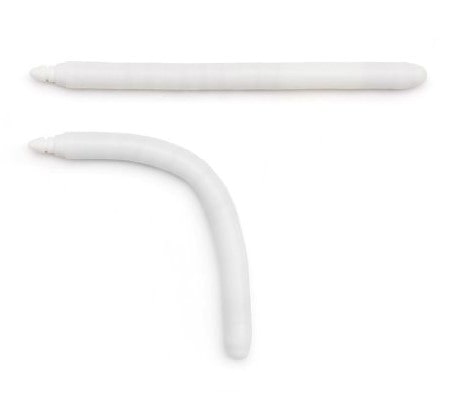
Semi-rigid (Malleable) Penile Implant
Semi-rigid type implants are not preferred much nowadays, because they are always hard inside the penis, making the penis noticeable when viewed from the outside. Since this type of implants is constantly hard, they can erode the penile wall and can sometimes come out of the penis. The advantages of semi-rigid implants are that they do not require inflation and have no risk of failure. As can be seen in the figure below, this type of implants do not have a pump or fluid reservoir. The penis can be bent down and remains bent in the underwear.
Inflatable Penile Implant
Inflatable implants work by transmitting the fluid in the reservoir to the cylinders in the penis when the pump in the scrotum (inside the scrotum, next to the testicles) is squeezed and released several times before sexual intercourse. It is adequate to squeeze and release the pump 4-5 times. After sexual intercourse, the fluid in the penis is transferred back to the reservoir by pressing the button on the pump. The penis shrinks.
Inflatable implants are available in 3 different types: 2-piece, 3-piece, and 3-piece. The late increases both penile length and girth.
Among inflatable penile implants, we usually prefer 3-piece ones because 2-piece implants are more complex in terms of their mechanisms and higher risk of failure compared to 3-piece ones.
This type of implants is not noticed when viewed from the outside, and cannot be noticed even by the partner during sexual intercourse. The implant mechanism is as shown in the figure.
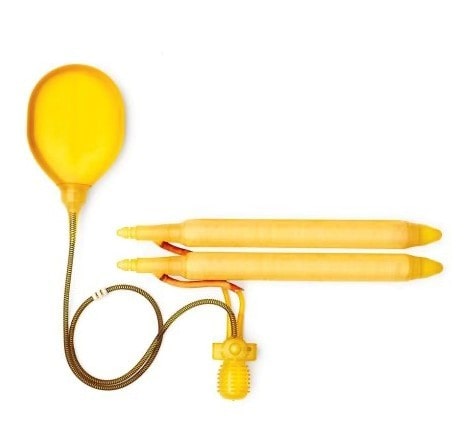
In 3-piece penile implants the cylinders which provide erection are placed inside the penis, the inflation pump is placed between the testicles, and the reservoir is placed next to the urinary bladder in the groin area.
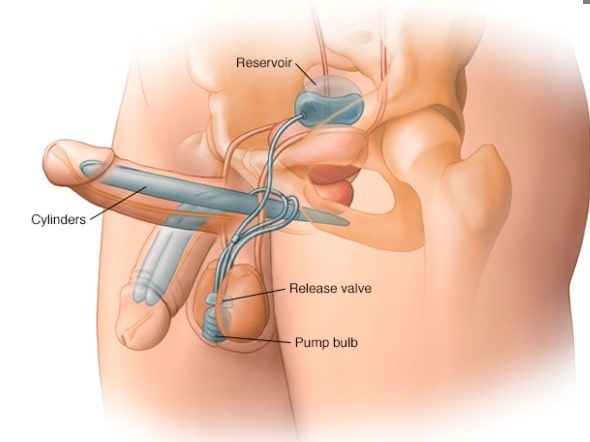
Recently, we prefer penile implant models that provide both transversal and longitudinal increase. The figure below shows an implant model with one side inflated and one side uninflated. The inflated side grows both transversely and longitudinally.
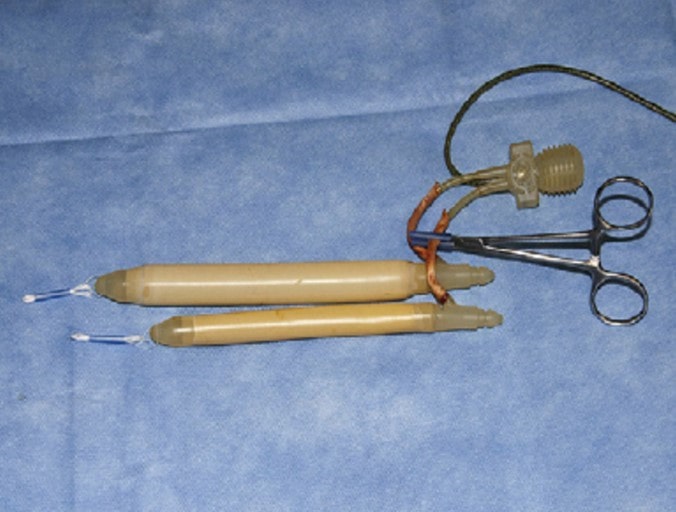
Surgical Procedures for Penile Implants
The surgical procedure can be performed under general or spinal anesthesia (also colloquially known as “waist numbing”). The type of anesthesia is determined after the examination by the anesthesiologist. In diabetic patients, the disease (blood glucose levels) should be brought under control before the operation. In this way, wound healing is not adversely affected and possible inflammations are prevented.
In surgical procedure, it is of great importance to provide a sterile environment and protect the patient from infections. Therefore, a detailed investigation is performed based on the evaluations of the preoperative urine and blood cultures. In patients who use blood thinners (anticoagulants), their drug therapies involving such drugs are replaced by short-acting injections.
A 4 cm long surgical incision is made from the penile root, above the testicles. First, the areas in the penis where the cylinders will be inserted are enlarged with special dilators. If there are adhesions, they are eliminated. Then, the penile length is measured with a special steel ruler from the inside of the penis. The measurement is made from the root of the penis to the penile glans as shown in the figure below.
After the measurement of the penile length, the implant in appropriate size is selected. Implants are available for all penis sizes from 11 to 30 cm. After the implant selection process, the cylinders shown in the figure are placed inside the penis, and then suturing is carried out.
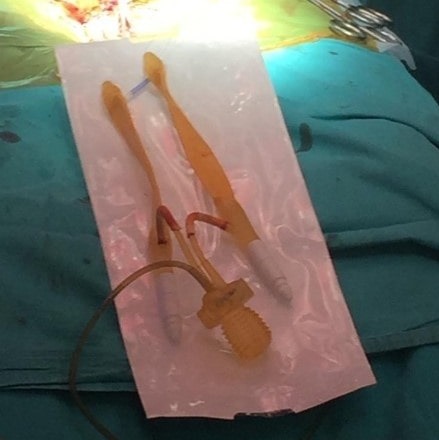
After suturing, the pump is filled with fluid and the mechanism is checked. The reservoir is passed through the same incision and placed next to the bladder in the groin. Finally, the pump is placed next to the testicles inside the scrotum, and the surgery is ended.
After surgery, a catheter can be used as a precaution. The catheter is removed one day after surgery. The length of hospital stay is 1 or 2 days after surgery.
The table below shows the available sizes of penile implants.

Does Any Complication Occur After Penile Implant Placement?
The most common complications observed after this surgical procedure:
> Infection: The incidence is 1-2%
> Mechanical failure: It can be encountered with a probability of 3/10,000.
> Tear: Despite being rare, the place where the cylinders will be placed can be torn due to excessive adhesions in the penis.
I recommend waiting 10 weeks after the surgery to start using the implant actively.







